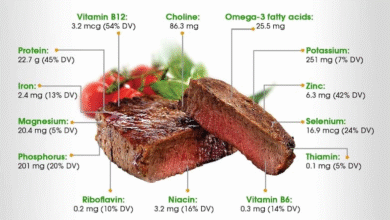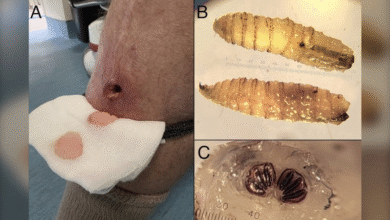Heatstroke Prevention: Essential Tips for Athletes

Heatstroke prevention is a critical aspect of ensuring athlete safety, especially for those involved in physically demanding sports like high school football. In recent weeks, communities have been shaken by the heartbreaking losses of young athletes who succumbed to heat illnesses during practice. To combat these heat-related incidents, it’s essential to understand the warning signs of heat exhaustion and to promote effective hydration tips among players and coaches. Recognizing the symptoms of heat exhaustion can prevent escalation to heatstroke, which is a life-threatening condition. Adopting proactive sports safety measures not only protects athletes but also fosters a culture of awareness and responsibility in high-pressure environments.
When discussing ways to safeguard against heat-induced medical emergencies, it’s vital to emphasize the importance of monitoring physical exertion in extreme temperatures. This encompasses understanding the risks associated with elevated body temperatures and maintaining optimal hydration levels during activities. Ensuring proper nutrition and rest is equally crucial in preventing serious health complications, particularly for young athletes engaged in high-energy sports. By raising awareness about the indicators of heat-related disorders, such as unusual sweating patterns and rapid heart rates, we can cultivate a safer environment for competitive sports. Such comprehensive approaches not only help in preventing severe conditions like heatstroke but also promote overall athlete health and wellbeing.
Understanding Heatstroke in Athletes
Heatstroke is a serious condition that can arise during high-intensity sports practices, especially in sweltering summer months. As defined by the Mayo Clinic, heatstroke occurs when the body overheats, typically due to prolonged exposure to high temperatures or extensive physical exertion. This condition is particularly concerning for young athletes participating in demanding sports like high school football, where rigorous practices can lead to elevated body temperatures and potential heat-related illnesses.
Recognizing the symptoms of heatstroke is crucial for athletes and coaches alike. Symptoms often include a high body temperature, changes in mental state such as confusion, flushed skin, and altered sweating patterns. Quick intervention is essential: if an athlete is showing signs of heatstroke, immediate cooling measures must be enacted. This could range from getting the athlete to a cooler environment to initiating hydration strategies right away. Being aware of heat exhaustion symptoms not only saves lives, but also enhances overall sports safety.
Heatstroke Prevention Strategies for Young Athletes
Preventing heatstroke begins with education and proactive measures, especially in high school athletes engaged in sports like football. Advocates, including those from the Zach Martin Foundation, emphasize the importance of self-advocacy when it comes to personal health. Young athletes should be educated about hydration tips and the necessity of proper nutrition, ensuring they consume adequate amounts of water and electrolytes before and during practices. It’s vital that athletes do not rely solely on coaches, as they might overlook individual needs.
Another critical aspect of heatstroke prevention is scheduling practices wisely. Coaches and trainers are encouraged to hold practices during cooler times of the day or indoors whenever feasible. Adjusting practice intensity and duration based on temperature readings can significantly contribute to athlete safety. Additionally, athletes should wear appropriate clothing — loose, lightweight, and light-colored fabrics can aid in keeping the body cool and reducing the risk of overheating during high exertion activities.
The Importance of Hydration in Heat Management
Hydration is a cornerstone of preventing heat illness among athletes, especially during practices in high temperatures. Young athletes must be encouraged to drink water frequently, not just when they feel thirsty, as thirst is often a late indicator of dehydration. Recommendations stress that consuming water before, during, and after physical activity is essential to maintaining peak performance and reducing the risk of heat exhaustion and heatstroke.
Moreover, hydration strategies should extend beyond just drinking water. Electrolyte-rich drinks can be beneficial during prolonged workouts in the heat, as they help replenish vital salts lost through sweat. Understanding hydration tips, especially in the context of high school football where the intensity can spike, is crucial. Coaches should ensure hydration breaks are included in practice sessions to instill the habit of ongoing fluid intake among young athletes.
Recognizing Heat Exhaustion Symptoms Early
It is essential for athletes and coaches to recognize the early warning signs of heat exhaustion to mitigate the risk of progressing to heatstroke. Symptoms can include excessive sweating, weakness, dizziness, nausea, and muscle cramps. Early intervention is key; the moment these symptoms appear, athletes should cease activity and rest in a cool place while rehydrating. This proactive approach not only helps in recovery but also prevents further complications, ensuring the safety of young athletes.
Additionally, educating players and their families about heat exhaustion symptoms can foster a culture of safety within sports programs. Regular training sessions for coaches that emphasize the recognition of heat-related illnesses and the steps to take can significantly impact athlete safety. Developing a clear plan for immediate action when symptoms arise is vital, ensuring that athletes are not left to a potentially dangerous fate during high-pressure practice sessions.
The Role of Coaches in Athlete Health
Coaches play a pivotal role in ensuring the health and safety of their athletes, especially concerning issues like heat illness. Beyond just planning drills and strategies, coaches must be knowledgeable about the risks associated with high temperatures and actively monitor their athletes for warning signs of heat-related illnesses. This includes keeping track of hydration levels and enforcing regular breaks during practices.
Moreover, creating an open line of communication with athletes about their health can significantly enhance a coach’s ability to manage heat-related risks. Encouraging athletes to voice their feelings, such as fatigue or discomfort, helps coaches make timely adjustments to training protocols. This proactive approach reflects a commitment to athlete well-being while fostering a supportive sports environment.
Educational Initiatives for Heat Safety in Sports
Educational initiatives surrounding heat safety are crucial for both athletes and coaches, particularly in contact sports like football. These programs can provide valuable information on heatstroke prevention, hydration strategies, and identifying heat illness symptoms. Organized workshops, training sessions, and informational pamphlets can raise awareness about the dangerous consequences of heat exposure, ensuring that all involved parties understand the critical need for preventive measures.
Schools and sports organizations should prioritize heat safety protocols as part of their training curriculum. Regular updates on best practices and guidelines, especially before the onset of hot weather seasons, can equip coaches and athletes with the knowledge needed to navigate the risks. Engaging families in these educational efforts can save lives, fostering a community approach to heat health in sports.
Nutrition’s Impact on Hydration and Heat Regulation
Nutrition plays a critical role in an athlete’s ability to hydrate effectively and regulate body temperature during hot conditions. A balanced diet rich in fruits, vegetables, and electrolytes helps maintain the body’s hydration levels, allowing athletes to perform at their best. Foods with high water content can contribute significantly to overall hydration, making it essential for coaches to promote healthy eating habits alongside hydration tips.
Furthermore, incorporating electrolyte-rich foods such as bananas, oranges, and salted nuts can aid in optimizing performance during heated games and practices. Athletes must understand that their nutritional choices directly impact their ability to cope with heat stress, thereby emphasizing the importance of a well-rounded diet in conjunction with hydration strategies.
Advocating for Policy Change in Youth Sports
Advocacy for policy change surrounding heat safety practices in youth sports is crucial for protecting young athletes. Organizations like the Zach Martin Foundation aim to implement guidelines that ensure safer practice conditions, which include mandatory hydration breaks and limiting practice times during extreme heat. Engaging stakeholders—from school boards to sports committees—can facilitate comprehensive strategies that prioritize student athlete health.
In addition, parents and community members can play a vital role in advocating for stronger safety measures by participating in discussions and petitions. Promoting awareness and action can lead to systemic change in how youth sports operate, ensuring that every athlete is safeguarded against the serious risks of heat-related illnesses.
Monitoring Player Condition During Practice
Monitoring the physical condition of players during practices is essential for preventing heat-related illnesses. Coaches and trainers should actively observe athletes for any signs of fatigue or distress, especially during high temperatures. Setting up a buddy system can also help athletes look out for one another, creating an environment where they feel comfortable reporting their condition to coaches.
Implementing scheduled check-ins where athletes can assess their hydration levels and overall well-being not only ensures that safety remains a priority but also fosters accountability among players. By being proactive in monitoring player conditions, sports teams can better navigate the challenges posed by heat and maintain a safer, healthier training environment.
Frequently Asked Questions
What are the key hydration tips for heatstroke prevention during high school football practices?
To prevent heatstroke during high school football practices, it’s crucial to stay properly hydrated. Athletes should drink water regularly throughout the day, not just when they feel thirsty. Before practice, aim to consume at least 16-20 ounces of water a few hours prior to starting. During practice, take breaks every 15-20 minutes to hydrate, and consider electrolyte-replenishing drinks if practicing for extended periods in the heat.
What are the heat exhaustion symptoms to watch for in athletes?
Common heat exhaustion symptoms include heavy sweating, weakness, dizziness, and headache. Athletes may also experience nausea and muscle cramps. Recognizing these early warning signs is critical for heatstroke prevention. If any of these symptoms appear, the athlete should immediately stop all activity, find a cool place, and hydrate to mitigate the risk of progressing to heatstroke.
How can coaches promote sports safety to prevent heat illnesses?
Coaches play a vital role in sports safety and can promote heat illness prevention by organizing practices during cooler times of the day and enforcing hydration breaks. They should educate athletes about heat exhaustion symptoms and the importance of hydration and nutrition. Additionally, coaches must be vigilant in monitoring athletes for any signs of heat-related illnesses, ensuring a safe environment for all participants.
What precautions should be taken to prevent heatstroke during outdoor activities?
To prevent heatstroke during outdoor activities, especially in hotter months, individuals should limit strenuous activities during peak sun hours, wear lightweight and light-colored clothing, and apply sunscreen. Gradually increase activity intensity and stay adequately hydrated by drinking water consistently. Monitoring one’s own health and encouraging peers to do the same is also essential.
What steps should be taken if someone shows signs of heatstroke?
If someone shows signs of heatstroke, such as confusion, high body temperature, or altered sweating patterns, immediate action is required. Move them to a cooler place, remove excess clothing, and start cooling their body with water or ice packs. Hydration is key, but if they are unconscious or unable to drink, call emergency services immediately. It’s crucial to lower their body temperature below 104 degrees Fahrenheit to prevent serious health complications.
Why is hydration important for preventing heat illness in athletes?
Hydration is vital for preventing heat illness in athletes as it helps regulate body temperature and maintain proper bodily functions. When engaging in physical activity, especially in high temperatures, the body loses water through sweat. Failure to replace this fluid can lead to dehydration, heat exhaustion, or even heatstroke. Athletes should be aware of their hydration status and encouraged to drink water regularly throughout the day.
| Key Points | |
|---|---|
| Recent Heat-Related Deaths | Two high school football players died from heat-related incidents during practice over recent weeks. |
| Heatstroke Explanation | Heatstroke is caused by overheating, often due to high temperatures or prolonged exertion in the heat. |
| Symptoms of Heatstroke | High body temperature (104°F+), confusion, altered sweating, nausea, rapid breathing, and headache. |
| Immediate Actions for Heatstroke | Cool the person down, hydrate, and monitor their condition before seeking emergency help. |
| Tips for Exercising Safely in Heat | Limit outdoor exercises in midday, hydrate, wear light clothing, and start gradually. |
Summary
Heatstroke prevention is crucial, especially during high-temperature months when athletes are at high risk. To effectively prevent heatstroke, individuals must advocate for their health by ensuring proper hydration, nutrition, and rest. Recognizing early symptoms and taking immediate action can save lives. By following safety tips for exercising in the heat, such as adjusting workout times and maintaining hydration, we can protect ourselves and others from the dangers of heat-related illnesses.




